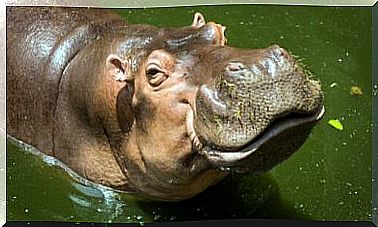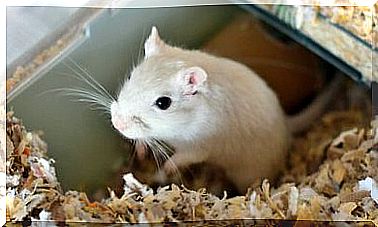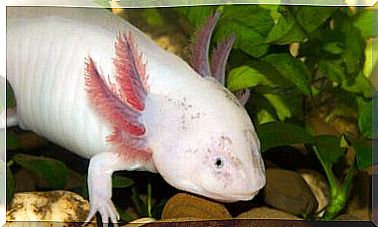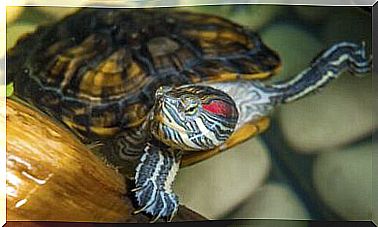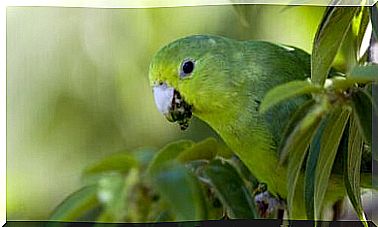Fun Facts About Two-Headed Snakes

Snakes with more than one head are a common trope in the mythology of different cultures, but they also occur exceptionally in the real world. Snakes that are born with two heads are called bicephalic snakes.
This phenomenon is extremely rare, but appears to occur more frequently in reptiles than in other groups of animals. Over the years, a considerable number of double-headed snakes have been detected, especially among specimens bred in captivity.
Although bicephaly is a fascinating process, it often has a very negative impact on snakes’ lives. If you want to know more about this strange and curious condition, read on.
Origin of two-headed snakes
Double-headed snakes are not a product of evolution, but arise as a result of errors during embryonic development, similar to those that can occur in Siamese humans.
Double-headed snakes can originate through a process called axial bifurcation, in which the embryo begins to divide along its longest axis but never ends. They can also originate by the opposite process: the fusion of 2 different embryos that doesn’t complete, resulting in an animal with 2 heads.
Therefore, bicephaly is a malformation, which can be caused by genetic factors – as in the case of inbreeding – or by environmental factors that affect embryonic development.
Depending on when in development this error occurs and its magnitude, each two-headed snake will be different from the others. Some snakes have only two heads, while others also have two stomachs or even two hearts. Furthermore, the degree of separation of the heads also varies.
It is possible that this defect occurs more frequently in reptiles because they have many more offspring and lay eggs, which are more exposed to the environment. Furthermore, species in this group do not have the embryonic control mechanisms present in mammals.
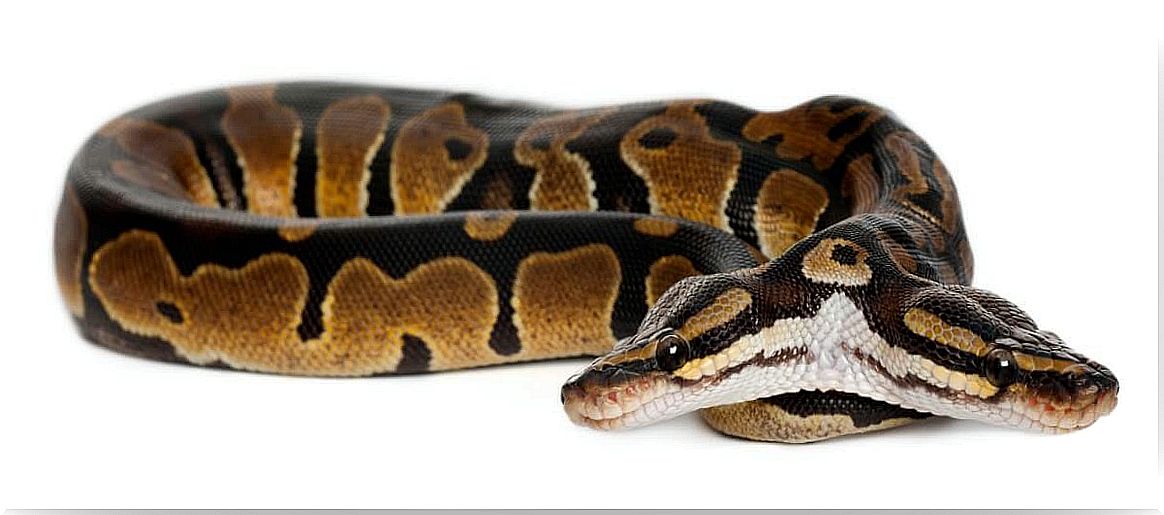
All of this means that there are no species of double-headed snakes, but specific individuals that can belong to any species. These mutations are the result of an error, not a normal trait.
Furthermore, these species will likely never come into existence, as snakes with two heads are less viable than ones with only one. Bicephaly entails a series of serious problems that cause the premature death of individuals who suffer from it.
Therefore, two-headed snakes almost never have offspring. Bicephaly is usually not inherited and is not selected by evolution. For this reason, this feature is not present in any vertebrate taxon in the animal kingdom.
Problems arising from bicephaly
Having two heads poses many difficulties for snakes’ behavior and survival. The heads of these specimens think independently and often disagree.
For this reason, double-headed snakes have problems when it comes to feeding. Often, the two heads struggle to consume prey as if they were different animals, so predation takes much longer than usual.
Also, snakes rely heavily on their sense of smell. This means that, if one of the heads is impregnated with the scent of the prey, the other can attack it or try to consume it.
These reptiles also have difficulty looking for or chasing food, as one of the heads may be interested in hunting, but the other is not. This problem applies even to issues such as deciding which direction to move, how to defend against a predator, or where to flee.
In addition, bicephaly can also affect snake courtship rituals. Depending on the species, males often rub their heads on the female’s back. Having two heads can make this behavior difficult.
Quite understandably, these animals’ lives are short by nature. Even captives often die earlier than expected and have a poorer quality of life. Therefore, however flashy they are, it is not advisable to try to breed these animals.
Some species that showed this characteristic
Some snakes are more likely than others to exhibit this strange event. Some of them are as follows:
- Ladder Snake ( Zamenis scalaris ): in 2002, a wild specimen of this Iberian species was found that had two heads. Just eight inches long, it was a young man. It was handed over to biologists at the University of Valencia for study.
- Lampropeltis getula: This snake was found in Arizona when it was just a baby and lived for 17 years at a university. This longevity is rarely achieved by an animal with these characteristics.
- Corn snake ( Pantherophis guttatus ): A two-headed specimen of this species had more than 15 normal offspring at the San Diego Zoo.
- Copper-headed Moccasin Snake ( Agkistrodon contortrix ): A two-headed wild specimen of this venomous species was found in Virginia, USA, in 2018. Interestingly, one of its heads was more dominant than the other.

This list could be much longer, as examples are numerous, especially among domestic snakes. Although very vulnerable, double-headed snakes offer the opportunity to study the functioning of the nervous system and decision-making in a very special context.
